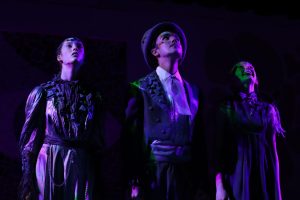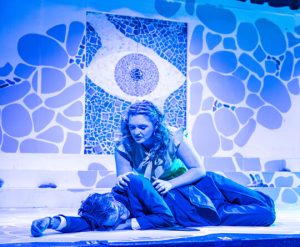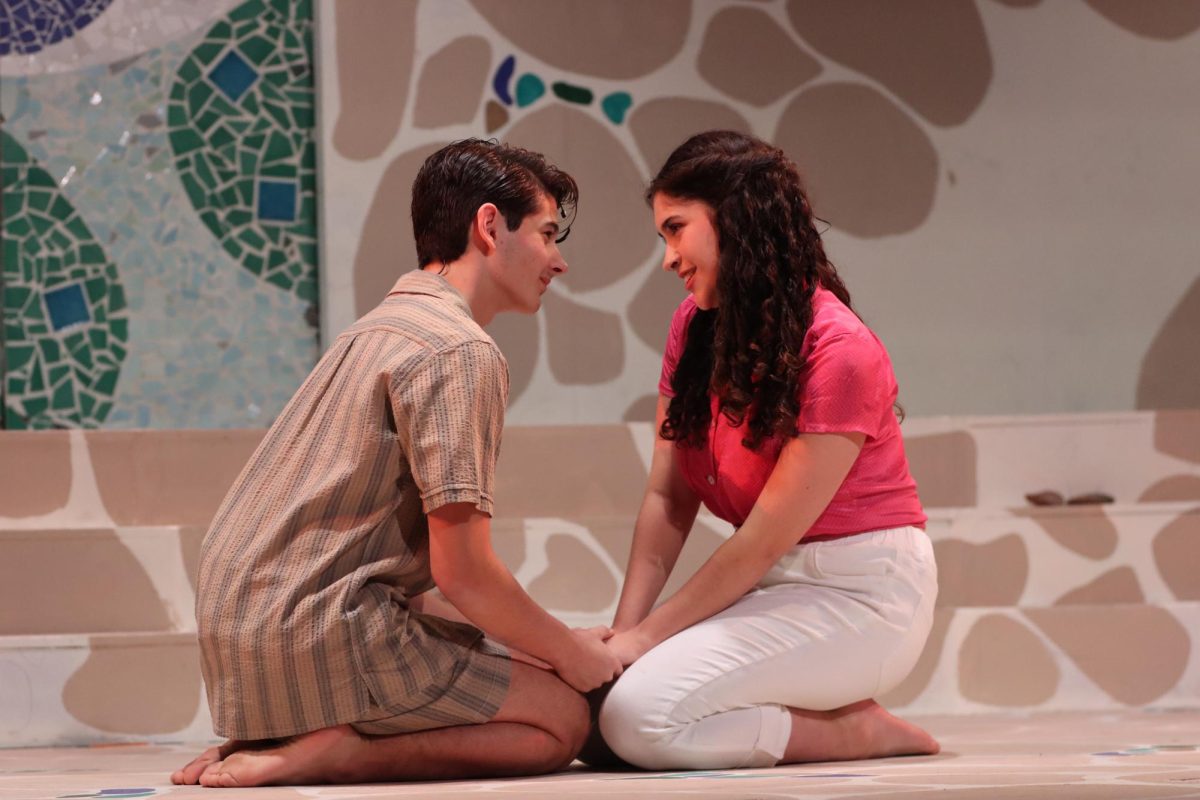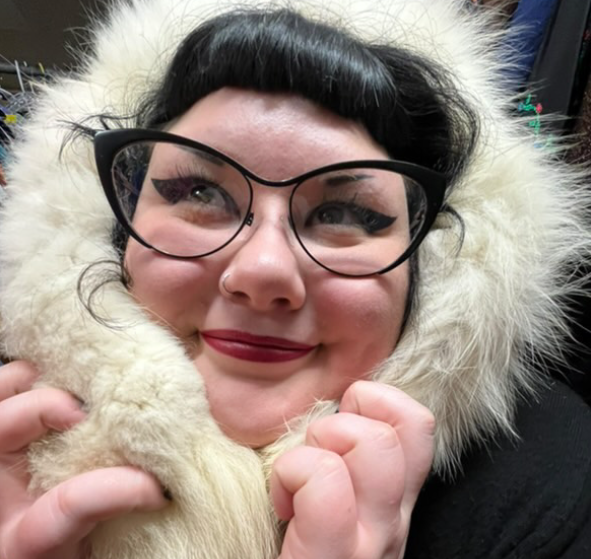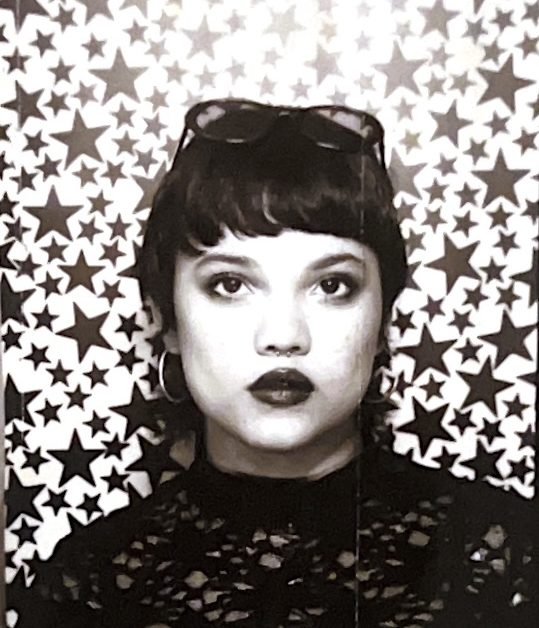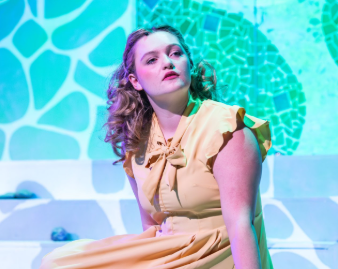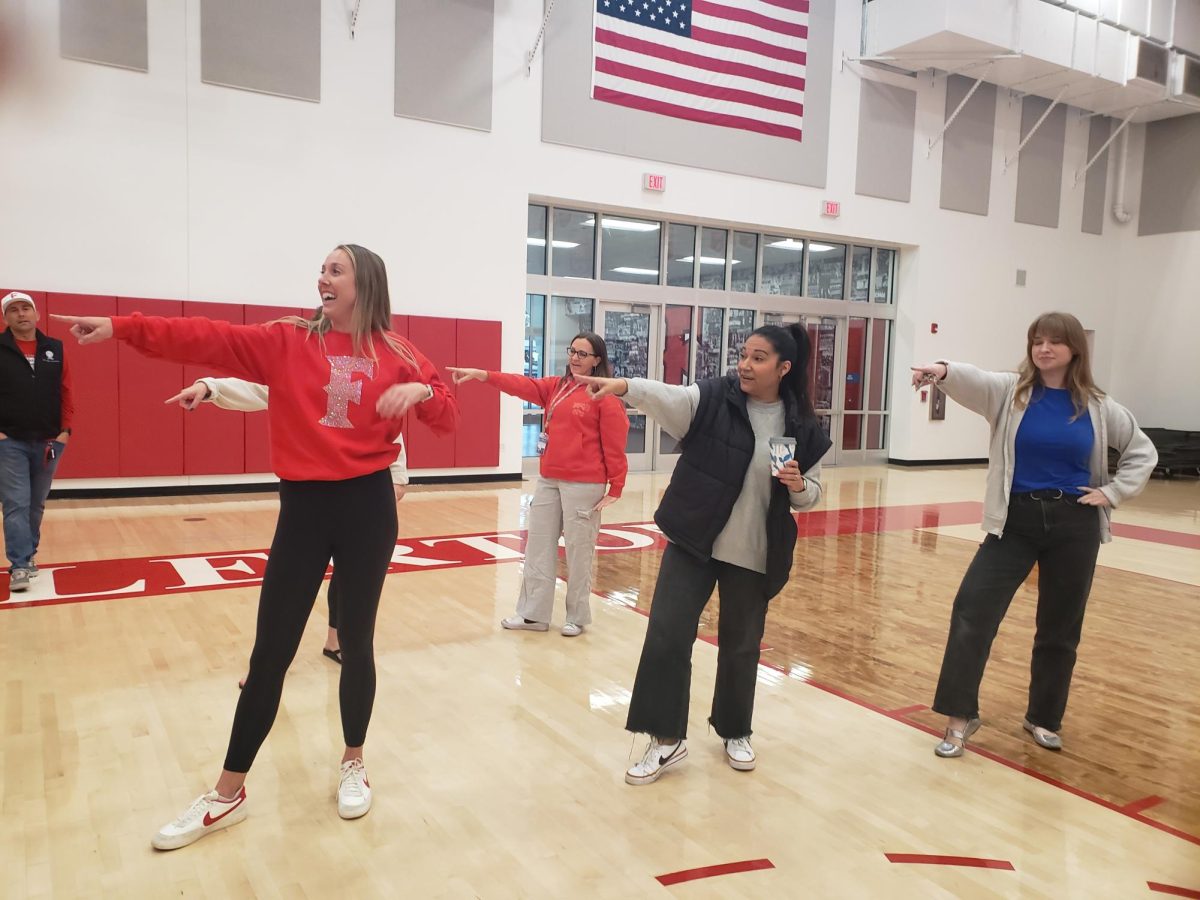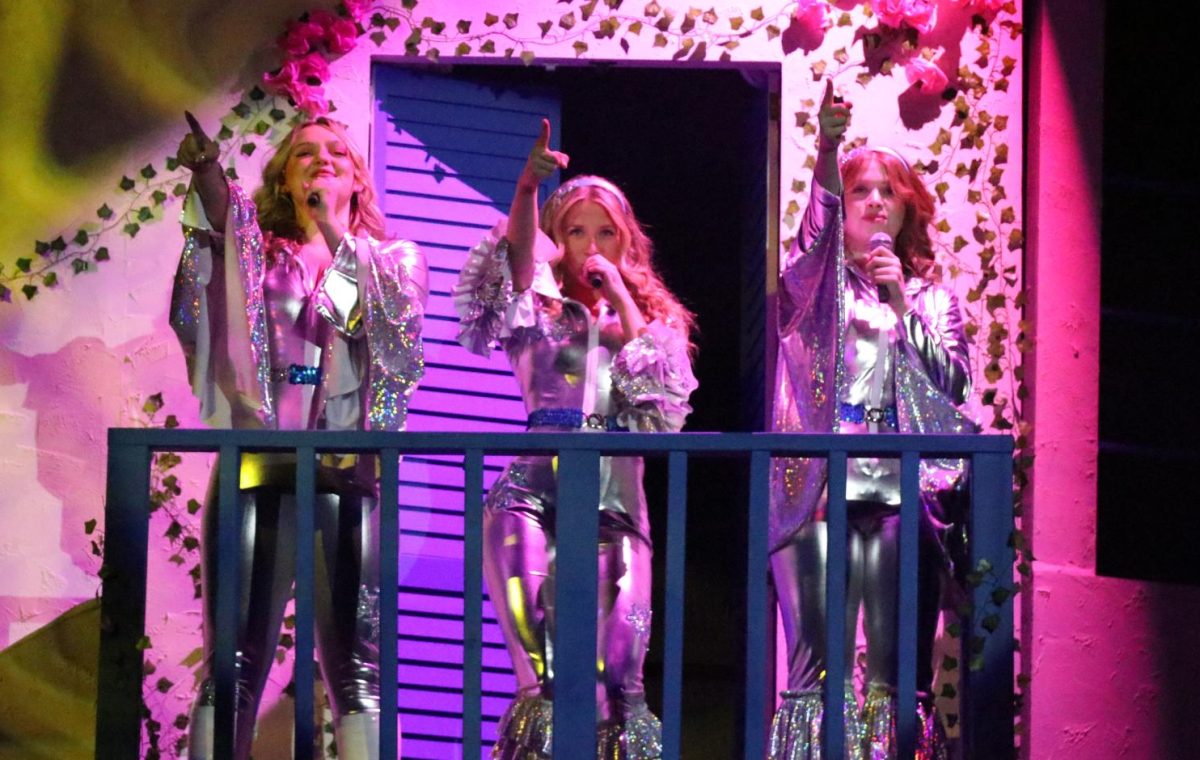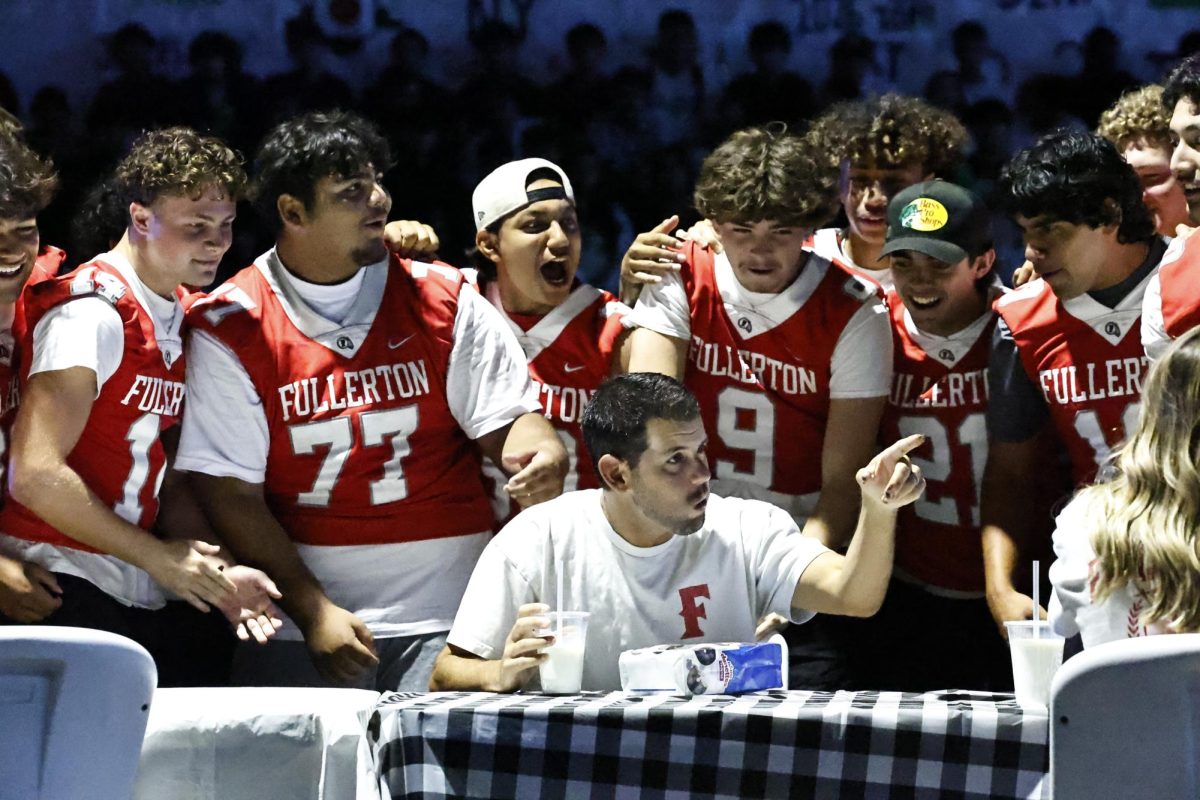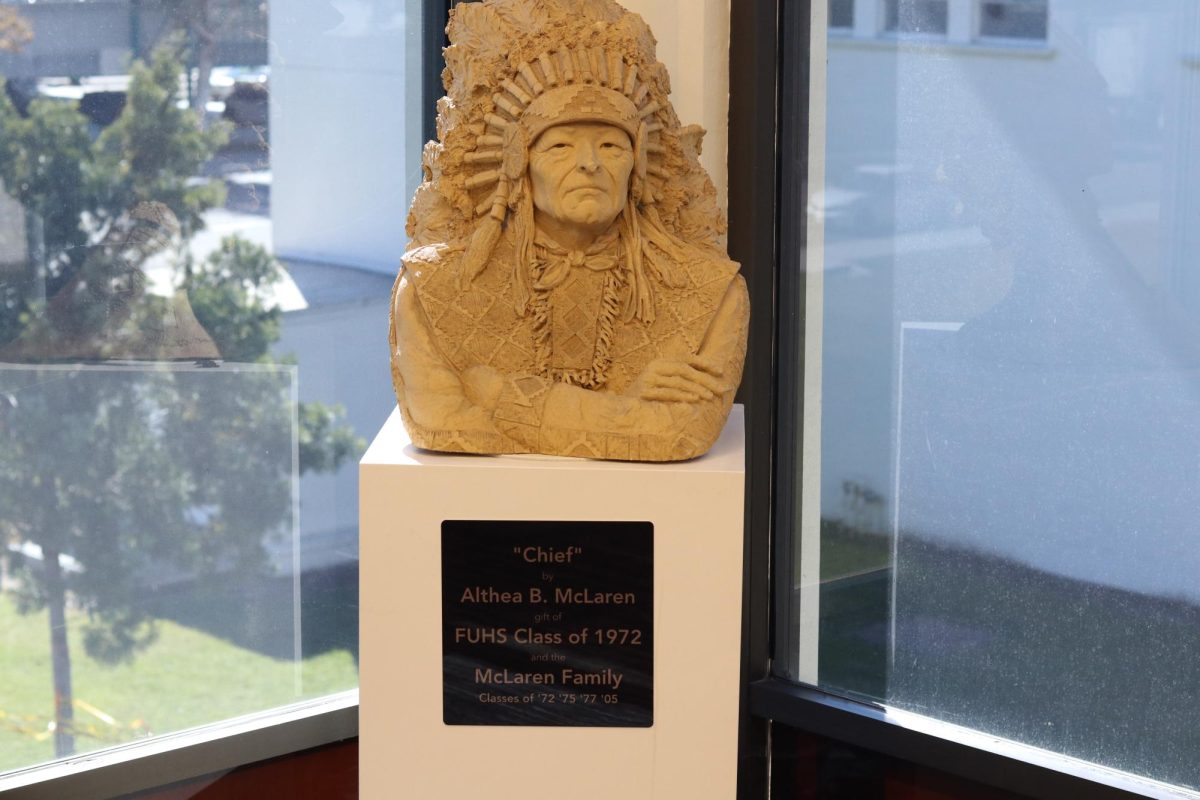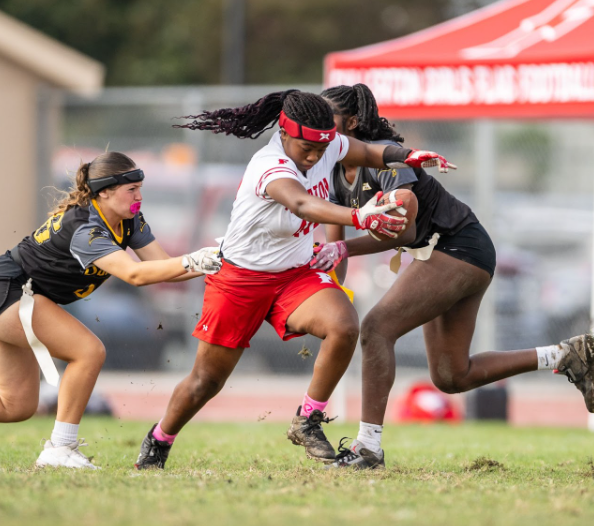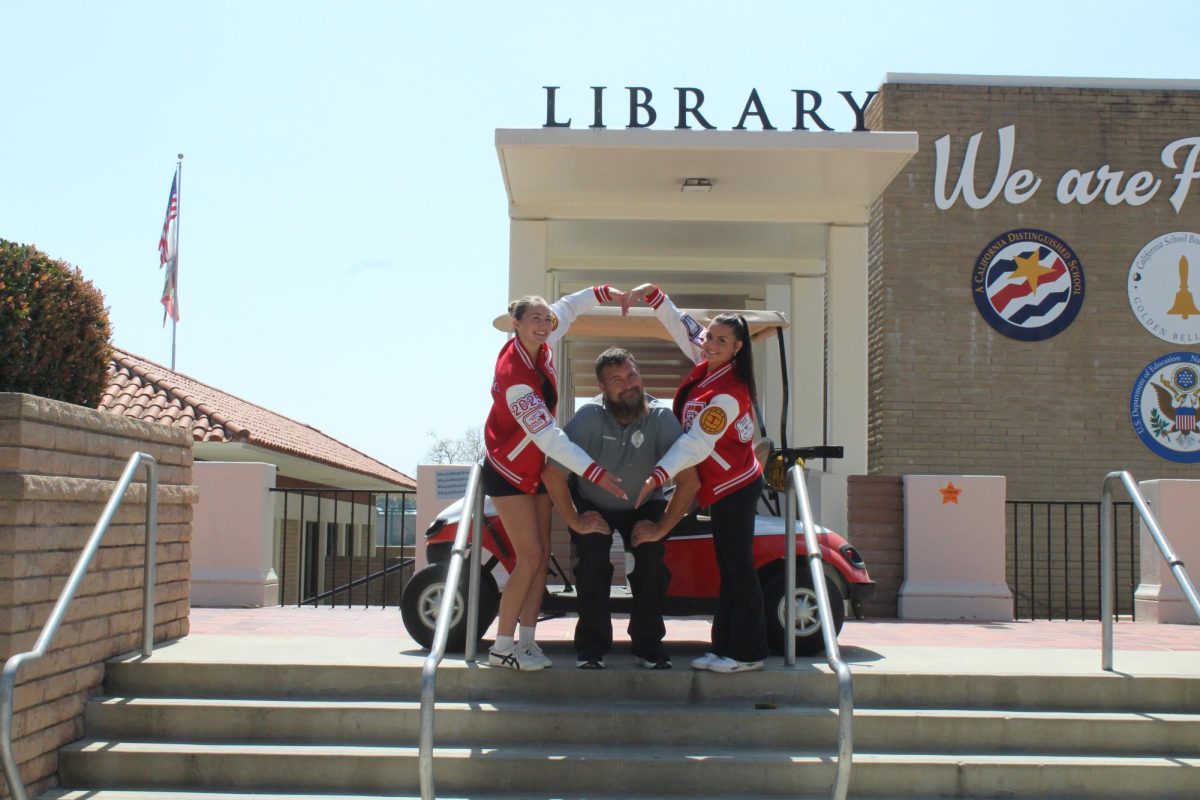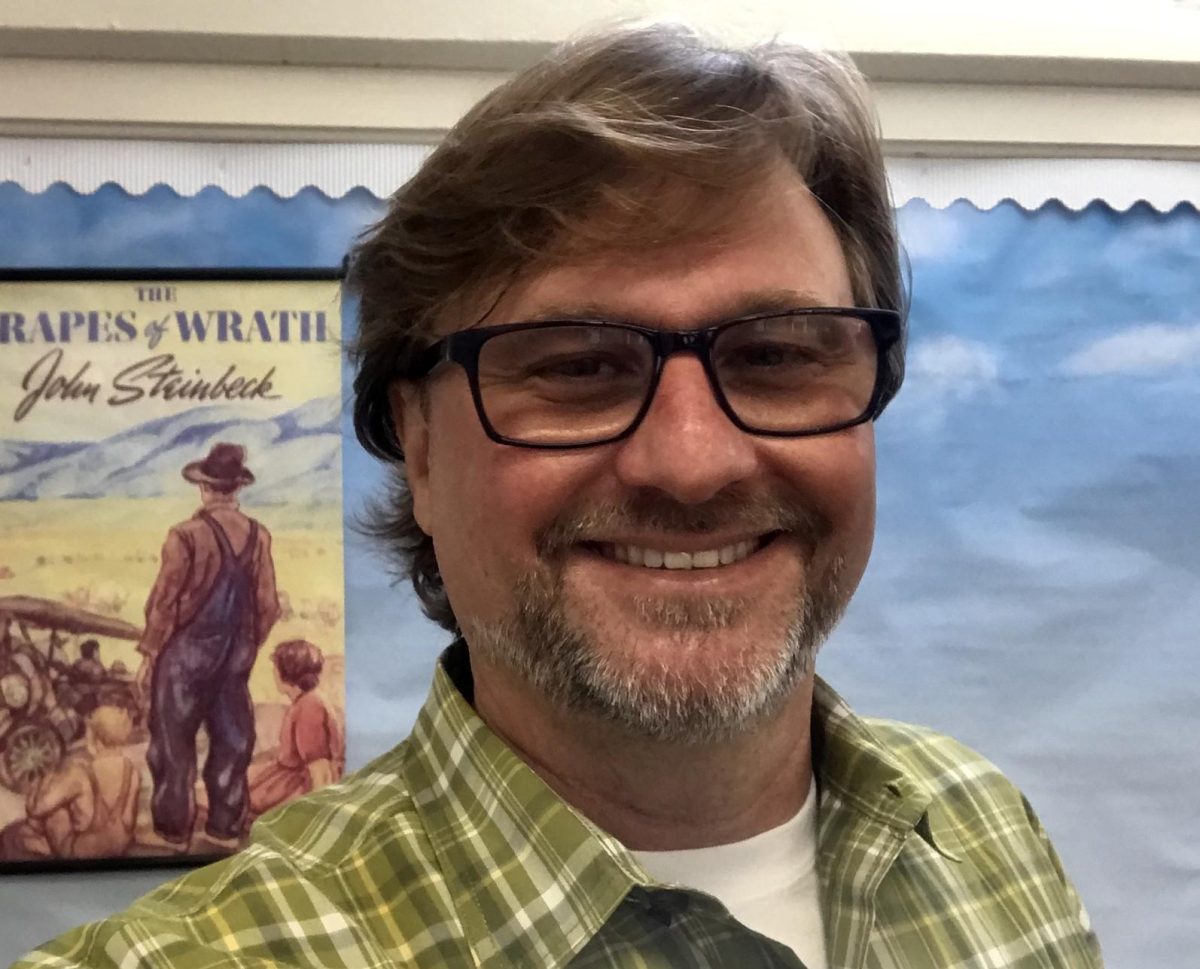First year theater teacher Jaclyn Stickel could have taken the easier path. For the production of Sarah Ruhl’s Eurydice, she could have opted for lights and sound to simulate the rain that appears in an elevator that travels to the Underworld. Instead, Stickel insisted that her students rise to the challenge of working with real water to make it rain on stage.
And the risk paid off.
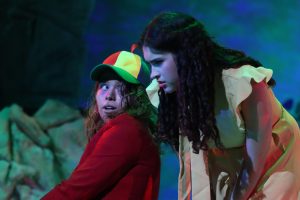
Audiences can experience the perfect gathering of sound, lights, sets, and, yes, rain, for the final three shows of the Fullerton production of Eurydice in the Little Theater, Nov. 13-15 at 7 p.m. Tickets are $5 for students Nov. 13-14 and $15 for general admission at fuhs.booktix.com.
Ruhl’s 2003 play is a modern retelling of the Orpheus myth from the perspective of Eurydice. Typically, adaptations of the Orpheus myth focus on his journey to retrieve Eurydice from the Underworld. This story, however, highlights Eurydice’s experience in the Underworld where she is reunited with her father and has time to reflect on her relationship with Orpheus.
Stickel’s connection to Ruhl’s work dates back to her high school years when her school’s theater department performed Dead Man’s Cell Phone. The play inspired her to look into other plays by Ruhl. When it came time for her college auditions, Stickel used a monologue from Eurydice.
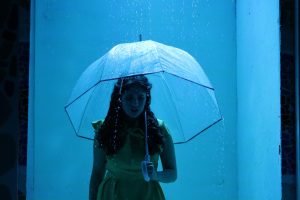
“I was just so fascinated by Eurydice. It’s so magical and I love the rain imagery and the string imagery,” Stickel said. “It’s always held a really special place in my heart.”
Technical adviser Evan Shirk supervised students through the construction of a closed water system that simulates rain in an elevator. “The distribution system up top allows it to look more like rain rather than like a shower,” said Shirk, who helped students use a pond pump and series of buckets to create the closed loop rain system.
The unique setup allows the water droplets to gradually fall at different times, making the rain effect more realistic. The system utilizes 20 gallons of water and a circulation system to recycle the water, allowing for less waste over the course of the six performances.
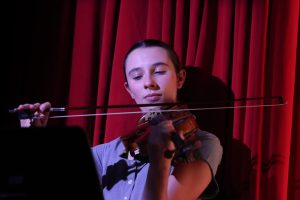
Sound designer Ashley Nava says she knew during the planning process that she wanted to emphasize string instruments for the music to complement the fact that Orpheus plays guitar in the script. Co-sound designer Sylvie Griffin then found royalty-free music and isolated the guitar and violin tracks.
Griffin wanted to have live music layered on top of a recorded track to create a fuller sound. Senior Bonnie Lynch volunteered to play the violin for the show. “We gave Bonnie the music, a bit of direction and then just let her roam free with it,” Griffin said. “We’ve put our full trust in Bonnie and it’s just been absolutely perfect.”
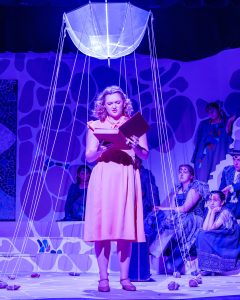
Two musical themes—the father’s theme and the lovers’ theme—run throughout the show. Griffin found music through a copyright free website then enhanced the themes in GarageBand, adding different instruments and a violin part. Griffin gave Lynch the modified track for her to add her own composition edits and transcribe into sheet music. The two then brought their work to rehearsals to figure out cues and find the right times to play.
Usually, musicians are given headsets to get cues to start playing. However, without a headset, the sound team had to come up with a creative solution. Using a desk light covered in green tape, Griffin created a makeshift call light, turning on when Lynch needs to play while minimally distracting the audience.
Griffin was able to create symbolism with the music in the show. As the show goes on, the number of instruments in each song increases, showing the strengthening relationship between each of the characters. As conflict and disconnect arises in the relationships in the show, the number of instruments slowly decreases. By the end of the play, the audience is left in complete silence.
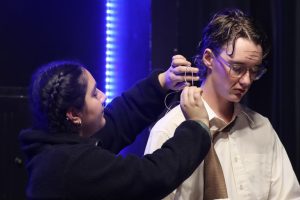
In addition to a customized soundtrack, the show is enhanced with special sound effects, including rain and the noise of air getting sucked out of the room. The crew also needed to build an underworld sound with ominous rumbling and just the right water drips. Nava created her own elevator soundscape by combining multiple clips of elevator sounds.
Sarah Ruhl’s metaphorical and abstract writing style created a challenge for both actors and technicians; her stage directions especially leave room for interpretation. For example, a pivotal moment in act one is when Eurydice falls down the stairs in the Lord of the Underworld’s apartment. The stage directions say, “Strange sounds— sounds of vertigo.” It was up to the designers to figure out what “sounds of vertigo” meant. In part, the designers created a sound suggesting a pile of instruments hitting the floor.
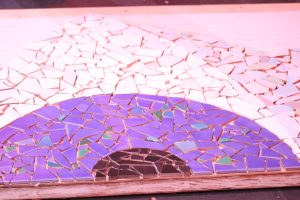
The focal point of the set is a tile mosaic designed in the shape of an eye. Technical director Jett Shields visited local hardware stores asking them to donate any surplus tiles. Assistant set designer Cora Der broke the tiles into small pieces and had crew member Jasmine Java help glue the design to the set.
“In Greek Mythology, when someone dies, coins are placed over the eyes of the corpse. They’re like a pseudo ticket to the Underworld,” Stickel said. “Additionally, there’s a lot of eye imagery in the show: Eurydice kisses Orpheus’s eyes in the first scene, the Lord of the Underworld says he wants Eurydice to kiss his eyelids. In a way, the eyes act as a pathway to death. The looming eye over the set is meant to reflect that.”
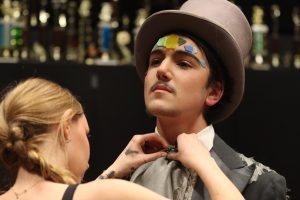
The cast for Wednesday and Friday includes Finley Danson, Malcolm Shirk, Nolen Sudduth, Raquel Radillo, Molly Cooper, Ian Cruz, Maddie Engelhardt, Abigail Lemus, Jocelyn Romay and Skylar Webber.
The cast for Thursday will be Sophia Goldblatt, Katherine Timmerman, Adnan Khan Fahim, Aubrey Duncan, Zoe McLaughlin, Max Allen, Emma Day, Grace Holbrook, Kayla McVicar and Fae Muñoz.
Eadyn Ochoa and Alex Thompson perform in all three shows.
